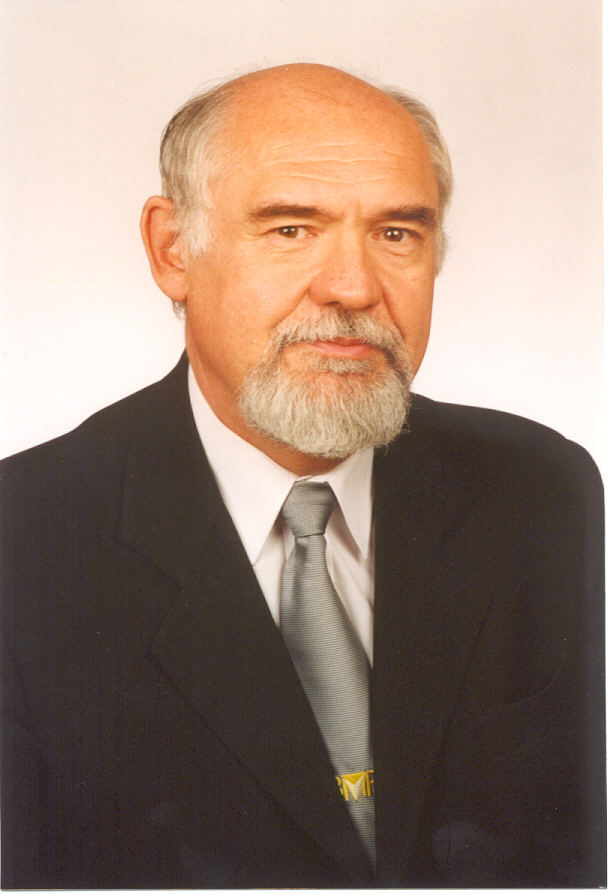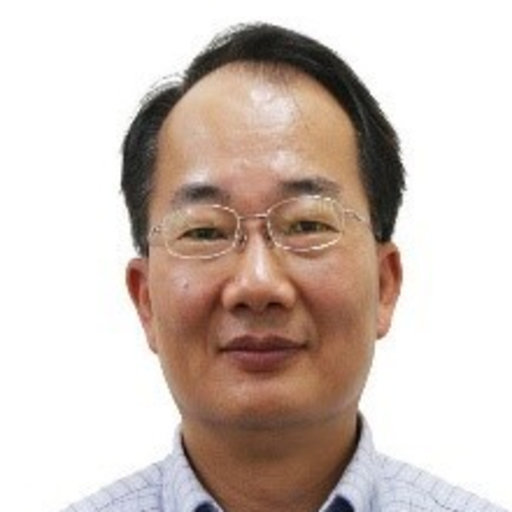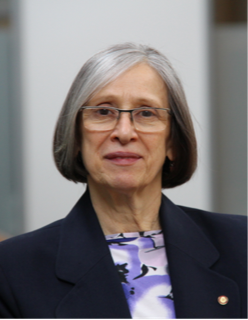Tác giả :
***** KEYNOTE SPEAKERS *****
Keynote speech 1:
Topic: Cyber-Physical System of Systems
Professor. Imre J. Rudas
Head of Steering Committee of
University Research and Innovation Center
Óbuda University, Budapest, Hungary
E-mail: rudas@uni-obuda.hu
Abstract:
Cyber-Physical Systems (CPSs) are the key elements of the Forth Industrial Revolution ( Industry 4.0) that started in the early 2010s. Since that time the development has dramatically accelerated, increasing number of existing and distributed CPSs are integrated providing services that go beyond the services of any of its isolated CPSs forming Cyber-Physical Systems of Systems (CPSoS). In the world of CPSoS a new type of Internet should connect any objects, any devices, any knowledge, any cyber-physical systems, any firms, companies, anyone, …i.e., anything! This is the basic idea of the term: Internet of Anything (IoA). Internet of Anything is the interconnection of any things (devices, systems, skills), anyone, anywhere and anytime within the existing Internet infrastructure. Our research team investigates new ideas to connect distributed CPSs systems and system elements (sensors, actuators, control logic, intelligent machines, data logging and data mining) to each other and represents them in a Virtual World forming a general-purpose information pool, which allows for large-scale CPSoS. The presentation summarizes the results and ideas of the software engine developed by our team, called MAXWHERE that provides effective working environments with spatial (Virtual Reality) multimodal arrangement and intelligent connectivity. The fundamental idea behind MAXWHERE is the generalization of the Document Object Model (DOM) introducing the Where Object Model (WOM) concept that covers the conventional WEB contents as well as the VR/AR building blocks in a coherent way empowered by the newest generation web APIs.
Typical applications of MAXWHERE includes industrial monitoring and facility support, context-based collaborative working environment, industrial training, and Interactive live presentations.
About the speaker:
 |
Imre J. Rudas graduated from Bánki Donát Polytechnic, Budapest in 1971, received the Master Degree in Mathematics from the Eötvös Loránd University, Budapest, the Ph.D. in Robotics from the Hungarian Academy of Sciences in 1987, while the Doctor of Science degree from the Hungarian Academy of Sciences in 2004. He received Doctor Honoris Causa degree from the Technical University of Košice, Slovakia, from “Polytechnica” University of Timisoara, Romania, from Óbuda University, and from Slovak University of Technology in Bratislava. He was awarded by the Honorary Professor title of Wroclaw University of Technology in 2013. He is active as a full university professor. He served as the President of Budapest Tech from 2003 till 2010. He was the founder of Óbuda University, the successor of Budapest Tec and was elected as the first President in the period 2010-2014. He served as the President of the Hungarian Rector’s Conference and member of European University Association in 2008. Now he is the Head of the Steering Committee of the University Research and Innovation Center. He has been the president of the Central European Living Lab for Intelligent Robotics since 2014.
|
|
He is a Fellow of IEEE, Senior AdCom member of Industrial Electronics Society (IES), he served IES as a Vice-President in 2000-2001. He was elected as the Vice-President for Membership and Student Activities in IEEE System, Man and Cybernetics Society for the period 2015-2016. He is the Senior Past Chair of IEEE Hungary Section. He served IFSA (International Fuzzy System Association) as Vice-President and Treasurer for a period of 7 years; he had been the President of Hungarian Fuzzy Association for ten years. He had been the Vice-President of the Hungarian Academy of Engineers for four years. He serves as an associate editor of some scientific journals, including IEEE Transactions on Industrial Electronics, member of editorial board of Journal of Advanced Computational Intelligence, Editor-in-Chief of Acta Polytechnica Hungarica, member of various national and international scientific committees. He is the founder of the IEEE International Conference Series on Intelligent Engineering Systems (INES), IEEE International Conference on Computational Cybernetics (ICCC), IEEE International Symposium on Computational Intelligence and Informatics (CINTI, since 2000), IEEE International Symposium on Machine Intelligence and Informatics (SAMI, since 2003), IEEE International Symposium on Intelligent Systems and Informatics (SISY, since 2003), IEEE International Symposium on Applied Computational Intelligence and Informatics (SACI, since 2004), IEEE International Symposium on Logistics and Industrial Informatics (LINDI, since 2007). He has served as General Chair and Program Chair of numerous scientific international conferences. His present areas of research activities are Computational Cybernetics, Robotics, Cloud Robotics, Internet of Anything, Soft Computing, Fuzzy Control and Fuzzy Sets. He has edited and/or published 22 three books, published more than 800 papers in international scientific journal, conference proceedings and book chapters, and received more than 2000 citations.
|
Keynote speech 2:
Topic: AIoT Systems and their Applications
Professor. Yo-Ping Huang
Department of Electrical Engineering
National Taipei University of Technology
Taipei, Taiwan 10608
Email: yphuang@ntut.edu.tw
Abstract:
Through several waves of downhills and uphills in the past decades, Artificial intelligence (AI) has now evolved into a must have new technology or tool in every domain. Furthermore, with the advent of powerful GPU, AI-related research or AI-based applications have sprouted in every corner of the world. Originated from pure internet connectivity the Internet of Things (IoT) has become a structure that can collect every piece of data from physical devices, daily activities, images or video into a data reservoir. As a result, tons of data are automatically generated into an enterprise database in a single day. This creates continuing demands on applying AI, IoT, and big data analytics to extract juicy contents from the huge databases. This talk will address from the AI and IoT, big data mining and system engineering perspective for systems developed to resolve the sensing, networking and applications faced in healthcare, defect image detection in manufacturing, and agriculture. Case study of AIOT in exercise monitoring and control using Kinect and Tensorflow, rehabilitation monitoring and tracking on joint rehabilitation monitoring after Total Knee Arthroplasty Reconstruction (TKA), Parkinson’s Disease (PD) using sensor devices, ophthalmological images classification, AOI defect image detection and labelling, fruit, vegetable and fish growth monitoring will be demonstrated in the talk.
About the speaker:
 |
Yo-Ping Huang received the Ph.D. degree in electrical engineering from Texas Tech University, Lubbock, TX, USA. He is currently a Professor in the Department of Electrical Engineering and Director of AIOT R&D Center, National Taipei University of Technology, Taipei, Taiwan, where he served as the Secretary General. He was a Professor and the Dean of Research and Development, the Dean of the College of Electrical Engineering and Computer Science, and the Department Chair with Tatung University, Taipei. His current research interests include fuzzy systems design and modeling, deep learning modeling, intelligent control, medical data mining, and rehabilitation systems design.
Prof. Huang serves as the President of the Taiwan Association of Systems Science and Engineering, IEEE SMCS BoG, Chair of the IEEE SMCS Technical Committee on Intelligent Transportation Systems, Associate Editor of IEEE Trans. on SMC: Systems, Associate Editor of Int. Journal of Fuzzy Systems, and the Chair of the Taiwan SIGSPATIAL ACM Chapter.
|
| He was the Chair of IEEE SMCS Taipei Chapter, the Chair of the IEEE CIS Taipei Chapter, and the CEO of the Joint Commission of Technological and Vocational College Admission Committee, Taiwan. He is an IET Fellow and an International Association of Grey System and Uncertain Analysis Fellow. |
Keynote speech 3:
Topic: Complex Networks
Professor. Ljiljana Trajkovic
School of Engineering Science
Simon Fraser University, Canada
Email: ljilja@sfu.ca
Abstract:
The Internet, social networks, power grids, gene regulatory networks, neuronal systems, food webs, social systems, and networks emanating from augmented and virtual reality platforms are all examples of complex networks. Collection and analysis of data from these networks is essential for their understanding. Traffic traces collected from various deployed communication networks and the Internet have been used to characterize and model network traffic, analyze network topologies, and classify network anomalies. Data mining and statistical analysis of network data have been employed to determine traffic loads, analyze patterns of users' behavior, and predict future network traffic while spectral graph theory has been applied to analyze network topologies and capture historical trends in their development. Recent machine learning techniques have proved valuable for predicting anomalous traffic behavior and for classifying anomalies in complex networks. Further applications of these tools will help improve our understanding of the underlying mechanisms that govern behavior, improve their performance, and enhance their security of social networks such as Facebook, LinkedIn, Twitter, Internet blogs, forums, and websites.
About the speaker:
 |
Ljiljana Trajkovic received the Dipl. Ing. degree from University of Pristina, Yugoslavia, in 1974, the M.Sc. degrees in electrical engineering and computer engineering from Syracuse University, Syracuse, NY, in 1979 and 1981, respectively, and the Ph.D. degree in electrical engineering from University of California at Los Angeles, in 1986.
She is currently a Professor in the School of Engineering Science at Simon Fraser University, Burnaby, British Columbia, Canada. From 1995 to 1997, she was a National Science Foundation (NSF) Visiting Professor in the Electrical Engineering and Computer Sciences Department, University of California, Berkeley. She was a Research Scientist at Bell Communications Research, Morristown, NJ, from 1990 to 1997, and a Member of the Technical Staff at AT&T Bell Laboratories, Murray Hill, NJ, from 1988 to 1990. Her research interests include high-performance communication networks, control of communication systems, computer-aided circuit analysis and design, and theory of nonlinear circuits and dynamical systems.
|
Dr. Trajkovic serves as IEEE Division X Delegate/Director (2019–2020) and served as IEEE Division X Delegate-Elect/Director-Elect (2018). She is also serves as Senior Past President (2018–2019) of the IEEE Systems, Man, and Cybernetics Society and served as Junior Past President (2016–2017), President (2014–2015), President-Elect (2013), Vice President Publications (2012–2013, 2010–2011), Vice President Long-Range Planning and Finance (2008–2009), and a Member at Large of its Board of Governors (2004–2006). She served as 2007 President of the IEEE Circuits and Systems Society. She was a member of the Board of Governors of the IEEE Circuits and Systems Society (2004–2005, 2001–2003). She is Chair of the IEEE Circuits and Systems Society joint Chapter of the Vancouver/Victoria Sections. She was Chair of the IEEE Technical Committee on Nonlinear Circuits and Systems (1998). She is General Co-Chair of SMC 2020 and SMC 2018 Workshop on BMI Systems and served as General Co-Chair of SMC 2016 and HPSR 2014, Special Sessions Co-Chair of SMC 2017, Technical Program Chair of SMC 2017 and SMC 2016 Workshops on BMI Systems, Technical Program Co-Chair of ISCAS 2005, and Technical Program Chair and Vice General Co-Chair of ISCAS 2004. She served as an Associate Editor of the IEEE Transactions on Circuits and Systems (Part I) (2004–2005, 1993–1995), the IEEE Transactions on Circuits and Systems (Part II) (2018, 2002–2003, 1999–2001), and the IEEE Circuits and Systems Magazine (2001–2003). She was a Distinguished Lecturer of the IEEE Circuits and Systems Society (2010–2011, 2002–2003). She is a Professional Member of IEEE-HKN and a Fellow of the IEEE.
|
|
Full Name:
|
*
|
|
| Email:
|
*
|
|
|
Title:
|
*
|
|
|
Captcha:
|
(*)
|
RadEditor - HTML WYSIWYG Editor. MS Word-like content editing experience thanks to a rich set of formatting tools, dropdowns, dialogs, system modules and built-in spell-check.
| RadEditor's components - toolbar, content area, modes and modules |
| | | |
| Toolbar's wrapper | | | | | |
| Content area wrapper | |
| RadEditor's bottom area: Design, Html and Preview modes, Statistics module and resize handle. |
It contains RadEditor's Modes/views (HTML, Design and Preview), Statistics and Resizer
| Editor Mode buttons | Statistics module | Editor resizer |
| |
|
|
| RadEditor's Modules - special tools used to provide extra information such as Tag Inspector, Real Time HTML Viewer, Tag Properties and other. | |
| | | |
*
|
|
|
|
Lastest News

December 30, 2018
January 30, 2019
February 15, 2019
March 15, 2019
Abstract Submission
February 28, 2019
March 30, 2019
April 15, 2019
Full paper Submission
April 30, 2019
May 15, 2019
May 20, 2019
Notification of Full paper Acceptance
May 31, 2019
June 05, 2019
Final full paper Submission
June 05, 2019
Early-Bird Registration
June 15, 2019
Online Registration
|